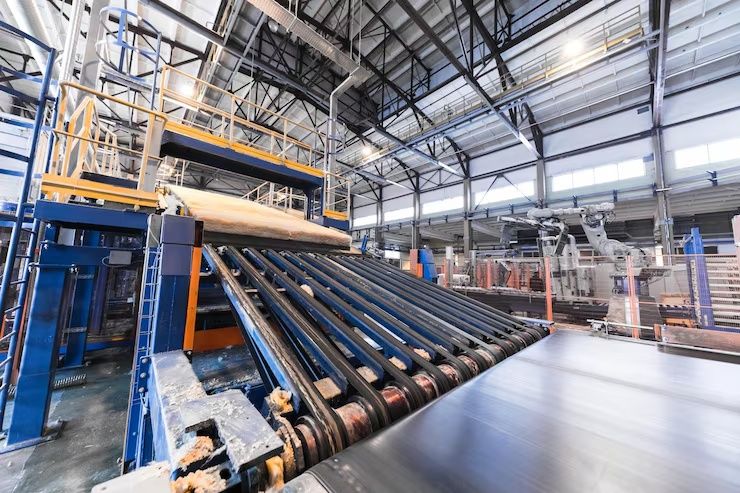Fiber glass, also known as glass fiber, is a lightweight, strong, and durable material made from extremely fine strands of glass. It plays a pivotal role across industries such as construction, automotive, aerospace, renewable energy, and marine applications. Its corrosion resistance, thermal insulation, and high tensile strength make it a preferred material for modern manufacturing and sustainable solutions. Fiber glass allows the creation of panels, pipes, tanks, insulation, and composite materials. Its flexibility for molding complex shapes combined with its long-lasting performance has made it a staple in industrial innovation and consumer products.
Importance: Why Fiber Glass Manufacturing Matters
Fiber glass manufacturing is crucial for several reasons:
-
Lightweight and High Strength: Ideal for vehicles, aircraft, and building materials.
-
Thermal and Electrical Insulation: Enhances energy efficiency in buildings and industrial setups.
-
Corrosion and Chemical Resistance: Perfect for pipelines, chemical plants, and marine environments.
-
Long Lifespan and Sustainability: Reduces replacement frequency and supports green manufacturing practices.
-
Wide-Ranging Applications: From insulation and roofing to automotive parts and renewable energy components.
Fiber glass enables technological advancement, environmental sustainability, and cost-effective solutions across multiple sectors.

Recent Updates: Industry Trends (2024–2025)
The fiber glass industry has seen notable technological and market advancements recently:
-
High-Performance Composites: Combining fiber glass with resins for enhanced strength and durability in aerospace, automotive, and energy applications.
-
Sustainable Manufacturing: Increased use of recycled glass, energy-efficient furnaces, and reduced emissions.
-
Automation and Smart Production: Computer-controlled fiber formation ensures consistent quality and higher output.
-
Lightweight Structural Applications: Adoption in electric vehicles, wind turbines, and aerospace for weight reduction without compromising strength.
-
Global Market Trends: Asia-Pacific dominates production, Europe focuses on eco-compliance, and North America integrates smart production lines.
Laws and Policies: Regulations Governing Fiber Glass
Fiber glass manufacturing is regulated for safety, quality, and environmental compliance:
| Region | Policy/Program | Impact |
|---|---|---|
| United States | OSHA and EPA regulations | Ensures worker safety and controls emissions |
| European Union | REACH, ISO 9001, ISO 14001 | Chemical safety, quality management, environmental compliance |
| India | Bureau of Indian Standards (BIS) | Product standards, environmental compliance |
Adherence ensures worker safety, product quality, and environmentally responsible manufacturing.
Tools and Resources: Essential Platforms
| Tool/Platform | Use | Website |
|---|---|---|
| Fiberglass.org | Industry insights, technical guides | fiberglass.org |
| CompositesWorld | Market trends, case studies | compositesworld.com |
| DIALux / Relux | Simulation and lighting design | dialux.com / relux.com |
| ISO Standards | Quality and environmental guidelines | iso.org |
| Material Supplier Portals | Access to fiber glass, resins, and equipment | globalcomposites.com |
These resources help engineers, manufacturers, and businesses make informed choices, optimize production, and ensure compliance.
Fiber Glass Manufacturing Process
-
Raw Material Preparation: Silica sand, soda ash, and limestone are cleaned, measured, and mixed.
-
Melting: Materials heated at 1,400–1,600°C to produce molten glass.
-
Fiber Formation: Molten glass extruded into continuous filaments or chopped strands.
-
Coating and Sizing: Fibers coated with resins or chemical sizings for improved bonding and durability.
-
Weaving or Mat Formation: Fibers woven into fabrics, mats, or bundles for reinforcement.
-
Curing and Finishing: Composites cured, shaped, and quality-checked.
Types of Fiber Glass Products
-
Woven Roving and Fabrics: Reinforcement for composites.
-
Chopped Strands: Ideal for molded components and panels.
-
Continuous Filaments: High-strength ropes and specialty parts.
-
Mats and Felts: Insulation, roofing, and decorative applications.
-
Pultruded Profiles: Lightweight beams, rods, and tubes.
Applications Across Industries
-
Construction: Insulation, roofing, decorative panels.
-
Automotive & Aerospace: Body panels, interiors, structural components.
-
Renewable Energy: Wind turbine blades, solar supports.
-
Marine: Boat hulls, decks, corrosion-resistant parts.
-
Electrical & Electronics: Circuit boards, transformers, cable insulation.
-
Industrial Manufacturing: Pipes, tanks, chemical-resistant structures.
Fiber glass enables durable, lightweight, and sustainable solutions across sectors.
Maintenance and Quality Control
-
Inspect fiber strands, mats, and composites regularly.
-
Monitor curing times and temperatures for uniformity.
-
Perform tensile, fire, and thermal testing.
-
Store raw materials and finished products safely to prevent contamination.
-
Ensure compliance with ISO and BIS standards.
FAQs: Common Questions About Fiber Glass
Q1: Is fiber glass safe to handle?
A: Yes, but wear gloves, masks, and protective clothing to prevent irritation.
Q2: Difference between continuous and chopped fibers?
A: Continuous fibers are long for high-strength composites; chopped fibers are short for molded products.
Q3: How durable is fiber glass?
A: Resistant to corrosion, fire, and wear, lasting decades if properly maintained.
Q4: Can fiber glass be recycled?
A: Yes, scrap material can be reused in insulation, concrete, and composite products.
Q5: Which industries benefit most?
A: Construction, automotive, aerospace, marine, renewable energy, and industrial manufacturing.
Conclusion
Fiber glass manufacturing is a cornerstone of modern industry, offering lightweight, durable, and versatile materials. With applications across construction, automotive, aerospace, marine, and renewable energy, fiber glass supports sustainable, high-performance solutions.
By leveraging advanced production techniques, regulatory compliance, professional tools, and emerging trends, businesses can optimize quality, efficiency, and environmental sustainability. Fiber glass remains an indispensable material in shaping the future of industrial manufacturing and green infrastructure.